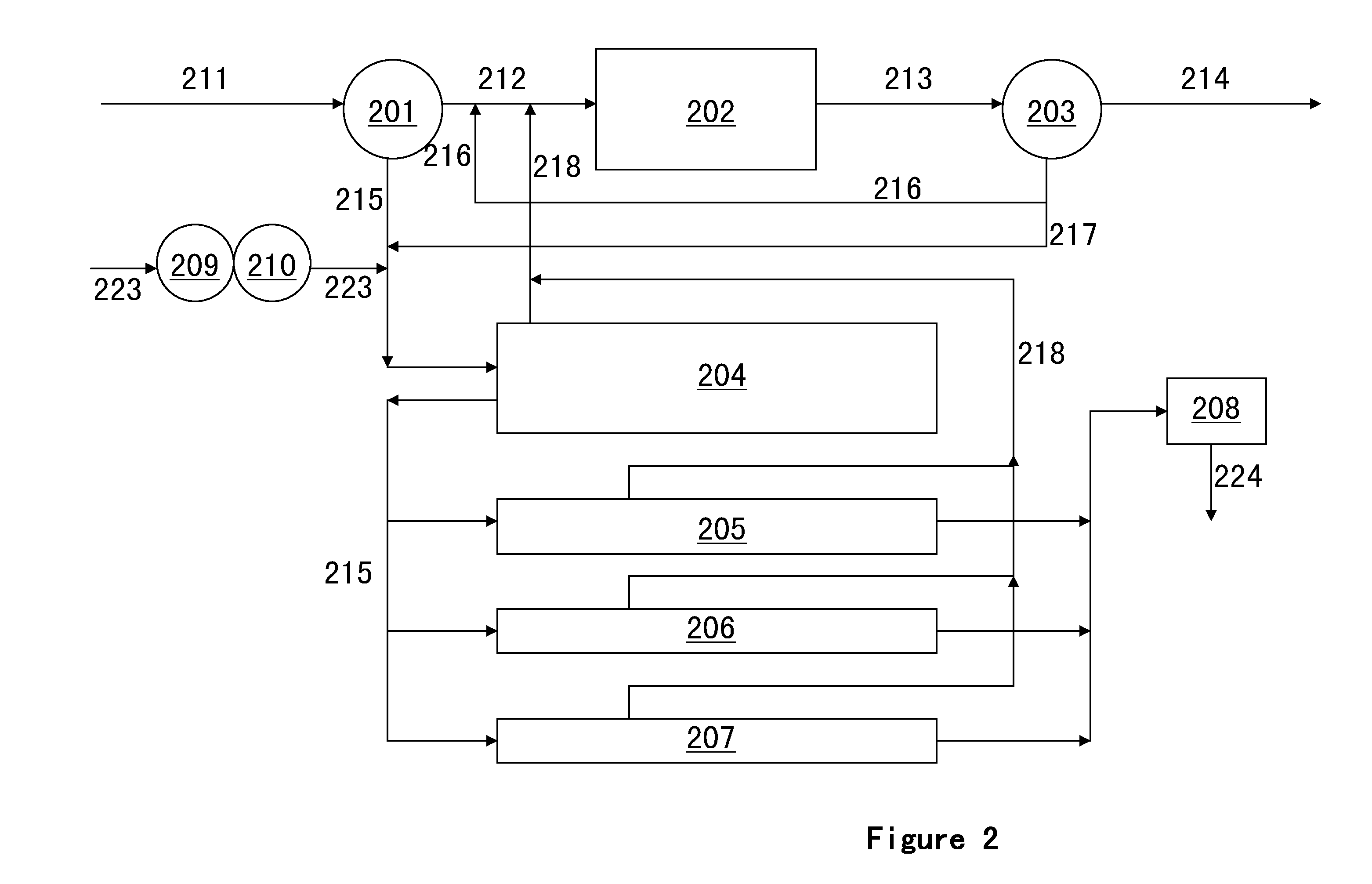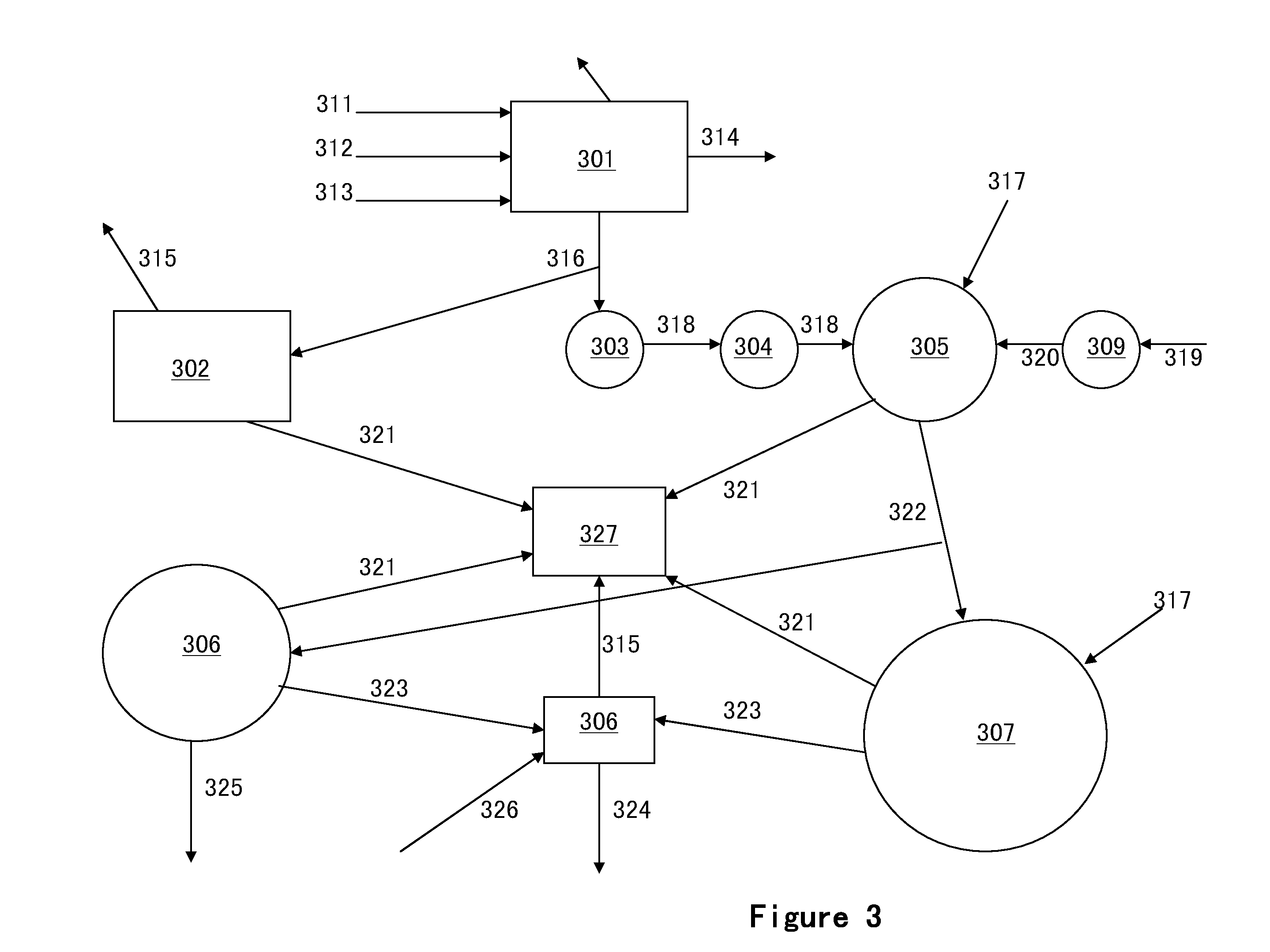Methods for Treatment of Waste Activated Sludge
- Summary
- Abstract
- Description
- Claims
- Application Information
AI Technical Summary
Benefits of technology
Problems solved by technology
Method used
Image
Examples
first preferred embodiment
[0034]Referring to FIG. 1, following conventional preliminary treatment (grit and trash removal) raw influent wastewater 111 is optionally passed through primary clarifier 101, with clarified influent 112 (or raw influent 11 directly) passing to activated sludge system 102. Activated sludge system 102 can use any one of a wide range of generally accepted approaches to activated sludge treatment before passing mixed liquor 113 to secondary clarifier 3. Clarified effluent 114 is subsequently subjected to optional fine filtration to remove residual TSS and conventional disinfection (chlorine, UV or Ozone) before being discharged. Return activated sludge 116 is recovered from the clarifier and cycled back to the front of the activated sludge system 102, where it is mixed with the primary clarified raw influent (or, unclarified raw influent if primary clarifier 101 is not used or bypassed) and cycled back through the activated sludge system 102 again—serving continuously, to reseed the p...
second preferred embodiment
[0044]The embodiment illustrated in FIG. 2 depicts an activated sludge wastewater treatment plant similar to that presented in FIG. 1. It differs greatly from the first system, however, in the way it deals with, and disposes of sludge. As with the first, preferred embodiment, removal of primary sludge—and therefore dealing with it as a discrete intermediate product—remains an option. In practice, however, this is unlikely to be exercised—notably because: (a) the “food” that would be removed in the primary clarifier would prove beneficial in helping pseudomonas species and their heterotrophic brethren deal with the increasingly important function of converting residual nitrate to nitrogen gas (denitrification); and (b) the solids that might be removed in the primary clarifier can more easily be removed in the secondary clarifier. This discussion will, therefore, focus specifically on disposition of waste activated sludge (217).
[0045]PKC and / or PNLM 210 is stored in silo 209 and meter...
third preferred embodiment
[0048]FIG. 3 depicts a generic, non-poultry CAFO (concentrated animal feeding operation) equipped with a full array of wastewater treatment options. In practice this would not normally be the case, with acutely cost-conscious swine, dairy or cattle farmers typically selecting only one wastewater treatment option. The hypothetical array depicted in FIG. 3 does, however allow a full discussion as to the relative benefits delivered by use of PKC and / or PNLM by non-poultry CAFO farmers.
[0049]The swine CAFO operation 301 is fueled by inputs of water 311, food 312 and young animals 313. Measurable output is grown and fattened animals 314 and wastewater 316. A less tangible, but nevertheless significant output is odor(not shown). Wastewater 316 may, optionally be directed to a traditional lagoon system 302 from which excess water 321 is land applied 310 according to crop “up take” criteria mandated by state regulatory authorities. Costs associated with the traditional system are minimal, b...
PUM
 Login to View More
Login to View More Abstract
Description
Claims
Application Information
 Login to View More
Login to View More - R&D
- Intellectual Property
- Life Sciences
- Materials
- Tech Scout
- Unparalleled Data Quality
- Higher Quality Content
- 60% Fewer Hallucinations
Browse by: Latest US Patents, China's latest patents, Technical Efficacy Thesaurus, Application Domain, Technology Topic, Popular Technical Reports.
© 2025 PatSnap. All rights reserved.Legal|Privacy policy|Modern Slavery Act Transparency Statement|Sitemap|About US| Contact US: help@patsnap.com



